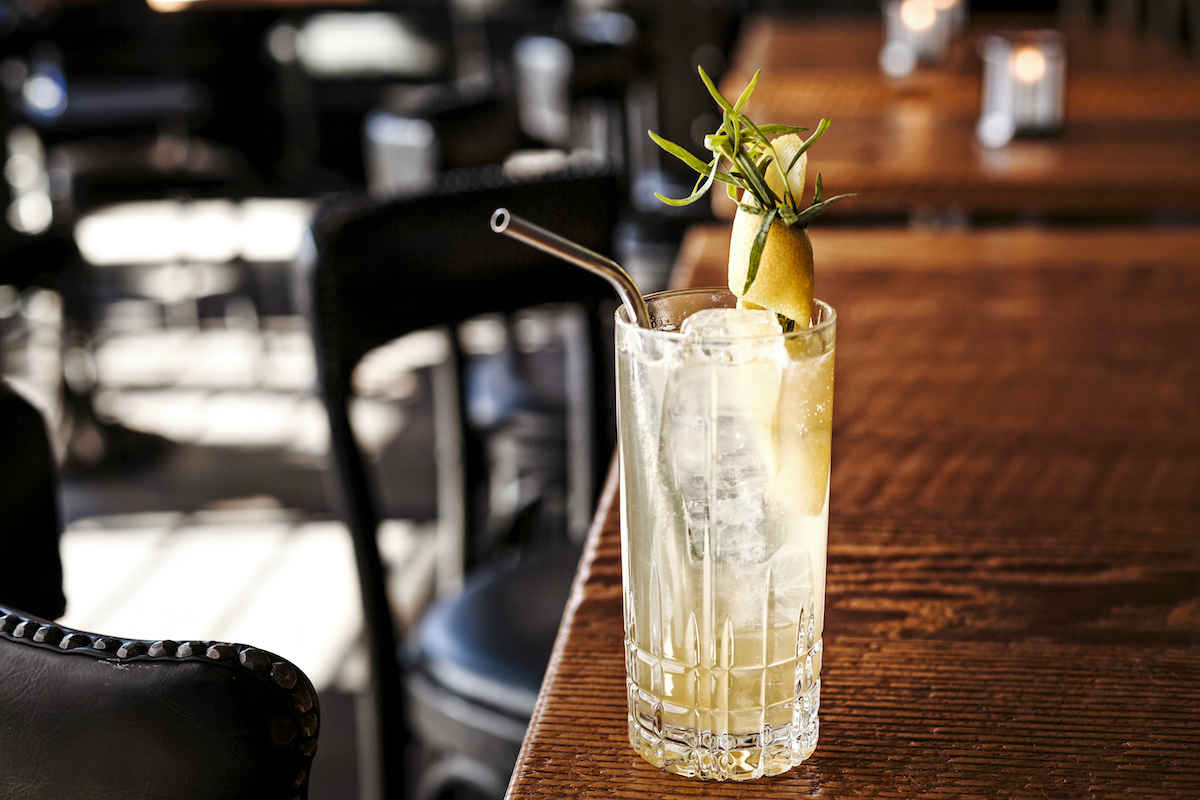The Gin & Tonic is often viewed as the most basic of cocktails (if you consider it one), best left to characters in John Cheever stories or people who don’t really know what they want to drink. But as anyone who’s been on the receiving end of a soda gun can tell you, there are good Gin & Tonics in this world, and there are bad ones.
Today we’re concentrating on good ones, and the most crucial element (after good gin) to their success or failure: tonic. We’ve asked 13 barkeeps from Maine to Miami what they rely on to give a G&T its bubbly, quinine kick, from store-bought brands to scratch-made syrups.
Find some gin, a wedge of lime, and let’s get down to business.
The below interviews have been condensed and edited for clarity.
Bartenders’ Favorite Tonics for G&Ts
Claire Boyle, Bar Manager at Straight Law, Brookline, MA
“We use a tonic called 1724 because of its orange rind bitterness. We use it in our Gin and Tonic Premio, garnished with a thick slice of orange and a sprig of fresh rosemary. The tonic is made in the Andes where quinine was discovered. It’s truly a top-of-the-line product that allows gin to shine, and shines itself.”
Erick Castro, Proprietor/Bartender at Raised by Wolves, San Diego
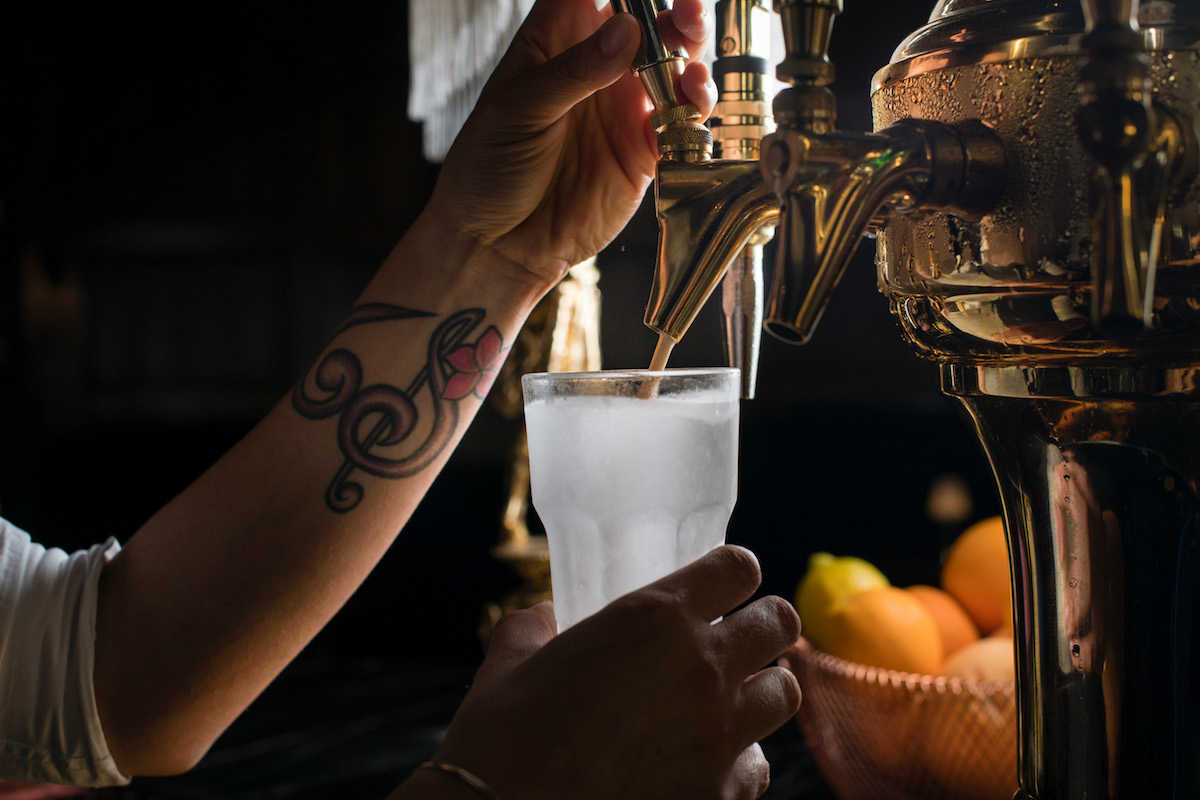
Raised by Wolves Draft Gin and Tonic. Photo: Anne Watson.
“Our Gin & Tonic on draft at Raised by Wolves is a combination of London dry gin, Champagne, club soda, and Cynar mixed with Jack Rudy’s Small Batch Tonic. The tonic syrup itself has so many layers of bitterness and earthiness, which pair so well with the vegetal notes that you find in Cynar. Plus, the addition of Champagne gives it a brightness and acidity that brings it all to life.”
Eduardo Carreiro, Beverage Director at Marcel, Atlanta
“We use Fever Tree’s Mediterranean Tonic. We really love all of the products that Fever Tree offers, but the Mediterranean bottling has a delicate herbal note and is gentler on the palate. We find that in a classic G&T, this is the best option as it’s more restrained, not too sweet, and really allows the gin to shine.”
Brandon Clements, Co-Owner/Bar Director at Saratoga, San Francisco
“I originally considered making my own tonic syrup, but when researching the process and all that can go wrong (i.e. cinchonism, or basically quinine poisoning), it struck me that I should explore my options. I’d used some of the other products from Small Hand Foods, like the orgeat and gum syrup, and was very impressed with their quality and consistency. So I decided to give their tonic syrup a go. Well, Jennifer Colliau hit it out of the park with this one. I decided after that first taste that this was something best left to the pros, and we’ve been using it ever since.”
Alex Fletcher, Beverage Director at Harlowe MXM, Dallas

Alex Fletcher at Harlowe MXM in Dallas.
“We make a house-made tonic syrup with lemongrass, cinchona bark, citric acid, citrus peels, pink peppercorn, and a few other goodies for our cocktails at Harlowe MXM. For another concept, Atwater Alley, we use Fever Tree for the Gin & Tonic bar that is setup with multiple options in the lineup. But you can also use good ol’ Schweppes—it’s great for basic bar use.”
Alexander Gilardi, General Manager at Byblos Miami, Miami Beach
“Fever Tree Mediterranean Tonic. The essential oils in the tonic water bring out freshness, acidity, and balance in our spirits that create wonderful flavors.”
Eric Gurry, Bar Director at Cultivar, Boston
“My favorite high-quality tonic to use is definitely Fever Tree. At Cultivar I prefer to add my own fresh flavors and garnishes (such as Chef Mary Dumont’s home garden-grown lemon balm or verbena) to “blank canvas” plain tonics. I enjoy mixing up G&Ts with their Mediterranean and Aromatic tonics at home.”
Trevor Landry, Beverage Director at Dakota’s Steakhouse, Dallas
“Currently, we use Q Tonic. It’s sweet with a bite, and it doesn’t cover up the flavor of the spirit it’s being paired with. It goes well with vodka and gin, as well as agave spirits. It’s also reasonably priced, which allows us to offer premium cocktails at a lower price— always a top priority.”
Jake Larowe, Bar Manager at Birds & Bees, Los Angeles
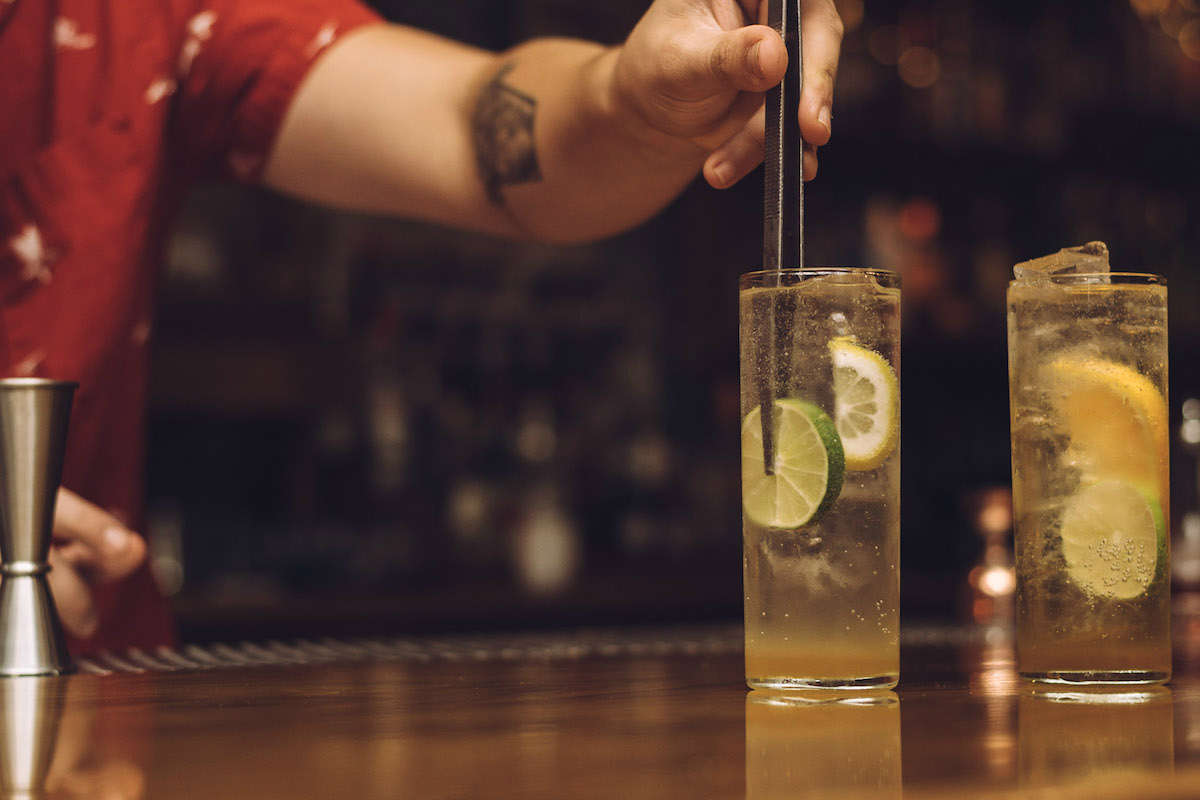
Gin and Tonic at Birds & Bees, LA.
“The benefits to using homemade tonic syrup become pretty apparent once you taste it. The flavor is vibrant and fresh, crisp and clean. You can change the ratios of the syrup to the soda water to give yourself a stronger tonic kick or a lighter refreshing summer drink. In short, making your own tonic will always be better than any other method. It lets you get the flavors and the concentration you want, and it’s just fun to do.”
Jessi Lesh, Bartender at Free Rein, Chicago
“I like the fresh, crisp, citrusy notes of Fever Tree. It never gives me a quinine hangover like the syrupy stuff you’ll get from a soda gun. The light and refined tonic really enhances the botanicals and citrus notes in gin.”
Morgan Schick, Partner at BV Hospitality (Trick Dog and Bon Voyage!, San Francisco)
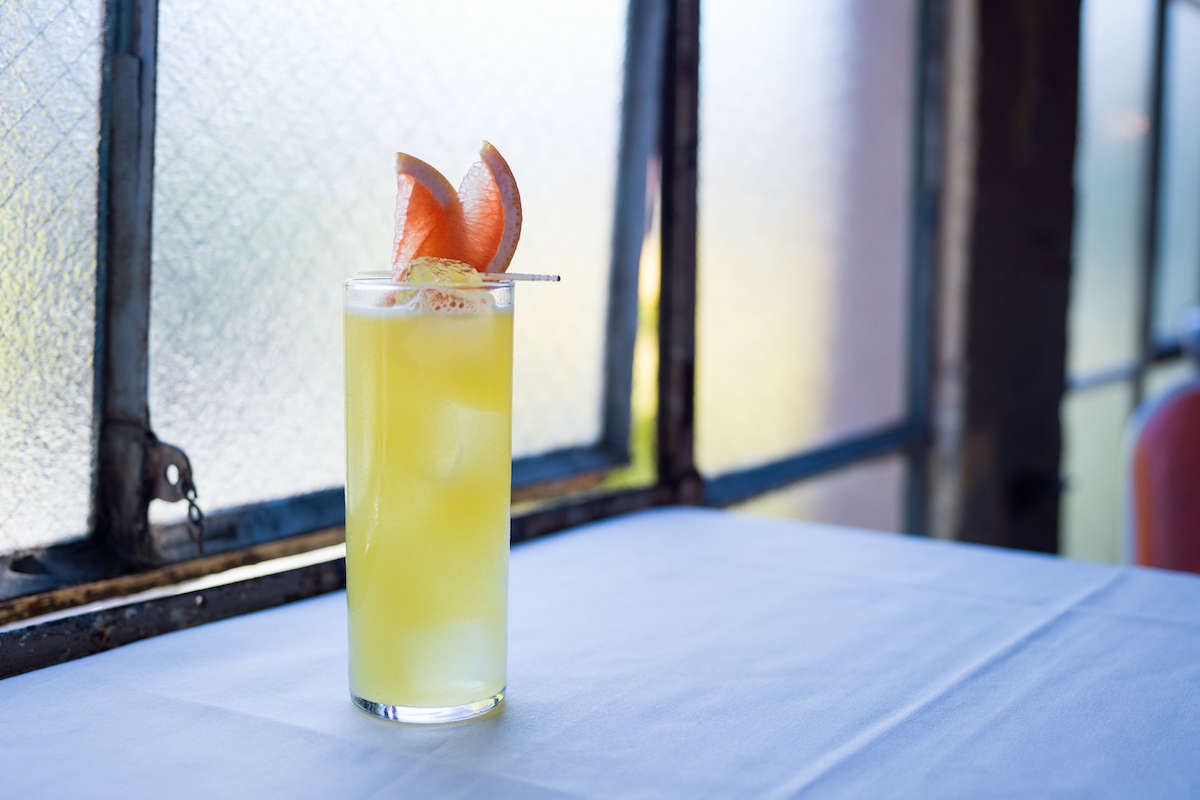
Broomstick Backlog at Trick Dog, SF. Photo: Sonya Yu.
“We use Fever Tree at the bars. We use it because it’s a great all-purpose tonic. I think that there are certain tonics that go better with certain gins, and we have used a different tonic for specific cocktails, but Fever Tree is very balanced with a wide range of gins, as well as other applications. The only other one I would consider is East Imperial, which is delicious and has an amazing texture. Flavor-wise, they both have a strong quinine component, a nice level of sugar, and hold up to big flavors.”
Chad Solomon and Christy Pope, Co-Creators of Midnight Rambler, Dallas
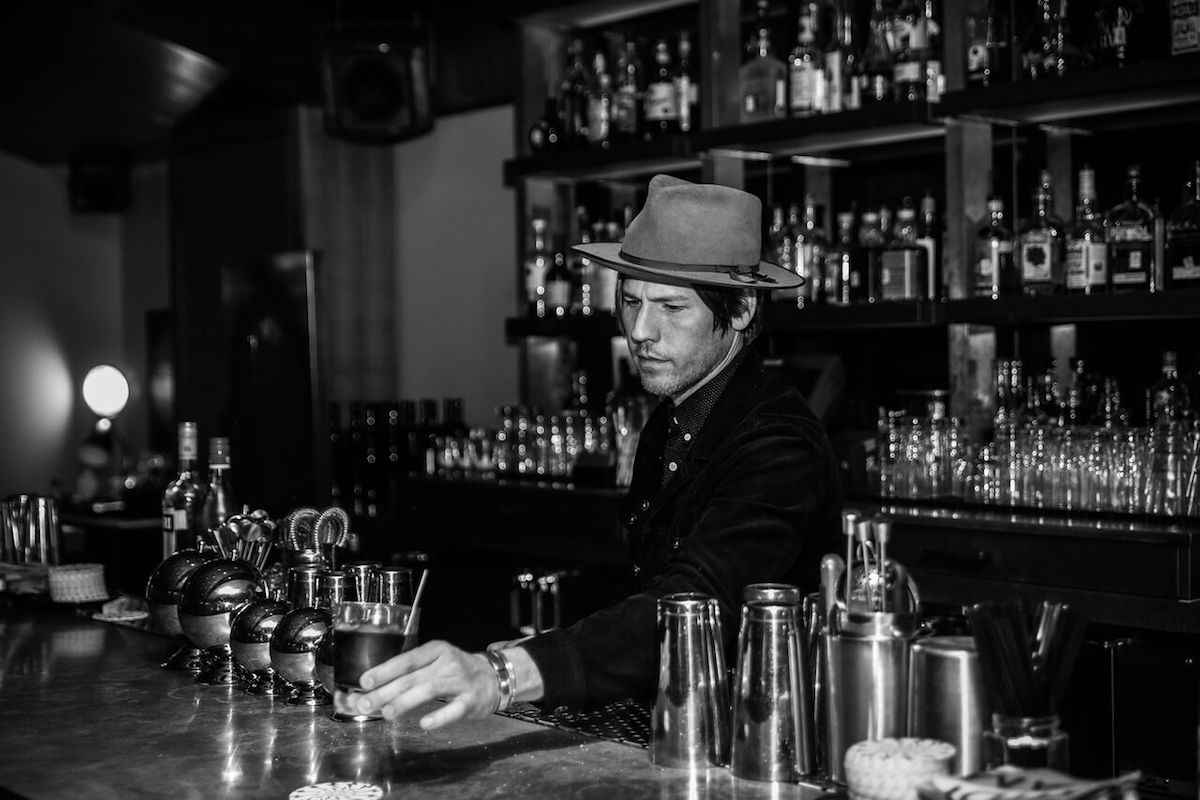
Chad Solomon at Midnight Rambler.
“Our favorite go-to tonic brand is Fever Tree. The Fever Tree products are incredibly crafted. They have real quinine, are not overly sweet, are very well balanced, and have a nice carbonation.”
Andrew Volk, Bar Back/Owner at Portland Hunt + Alpine Club and Little Giant, Portland, ME
“At both Hunt + Alpine and Little Giant we have two options for tonic water for our guests. One is simply classic Canada Dry tonic water, which we love and I have been drinking since I was a teenager (I should’ve realized then that that was weird and I was probably destined to become a bartender). Additionally, we make a tonic syrup in house that we use both in cocktails and add to gin and fill with soda to make Gin & Tonics. Offering a classic and familiar brand appeals to those drinkers who aren’t looking to go far outside their comfort zone, while having a syrup made in-house allows us to finely control sweetness and flavors in our own house tonic.”
